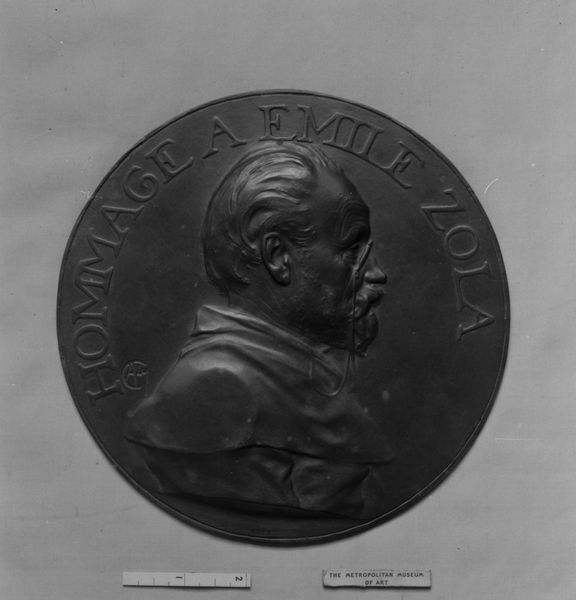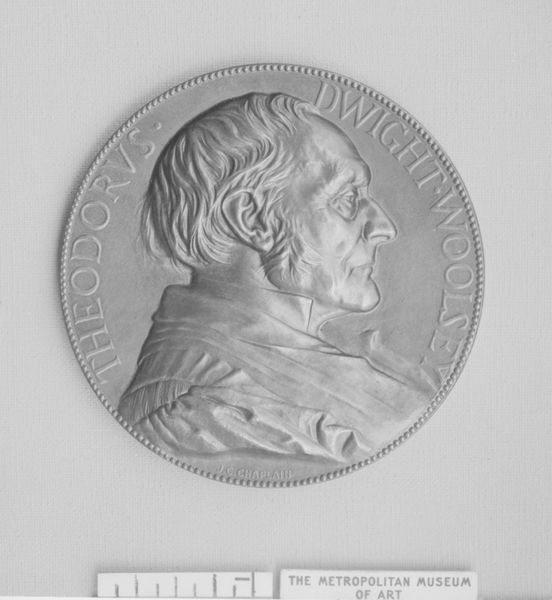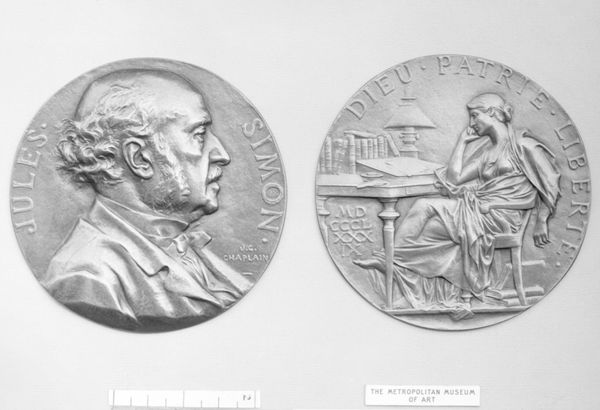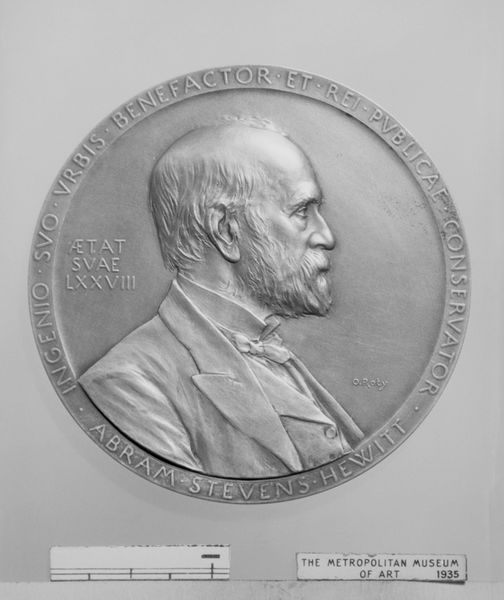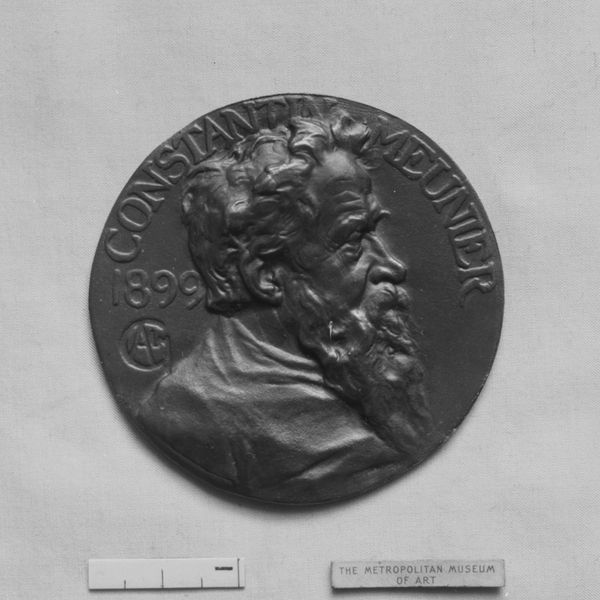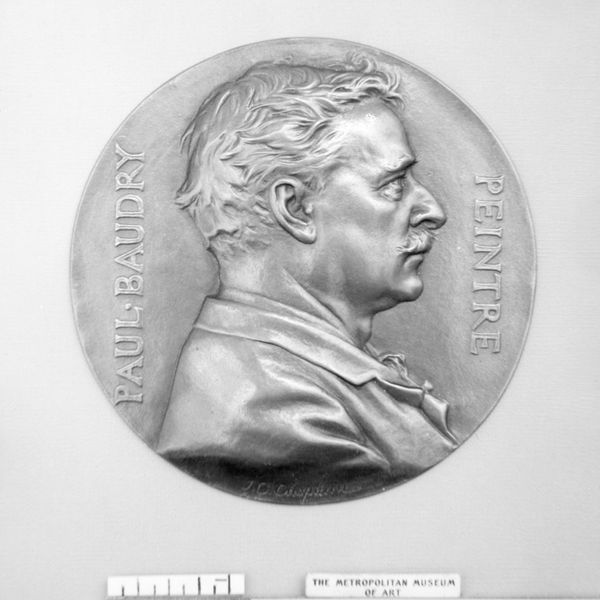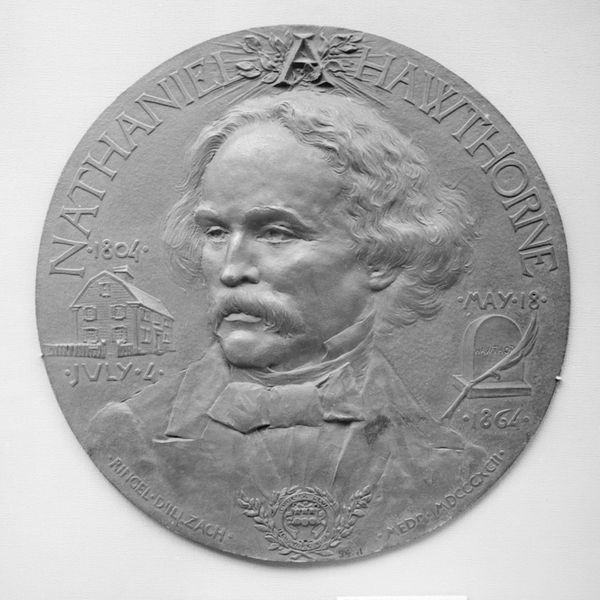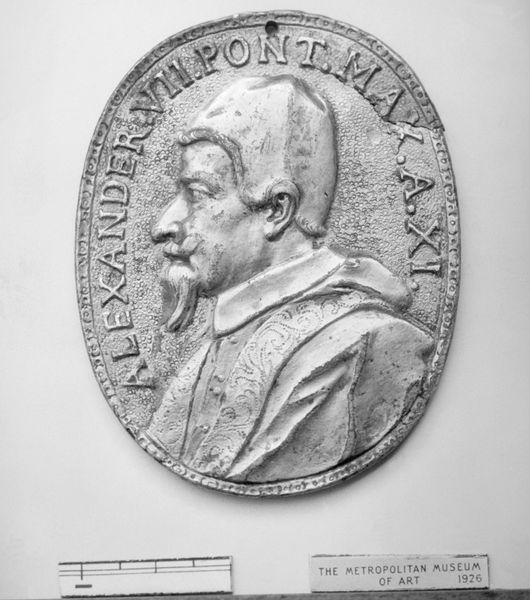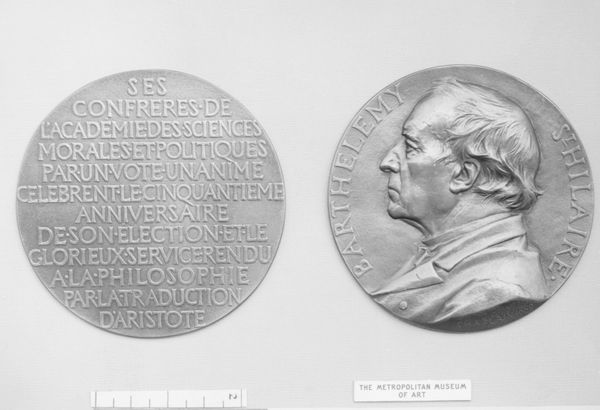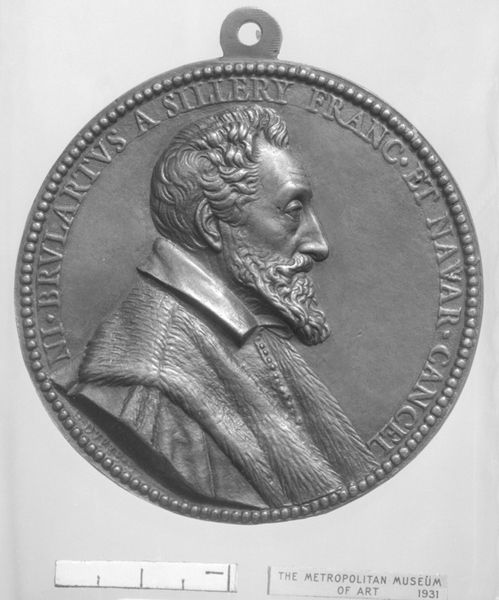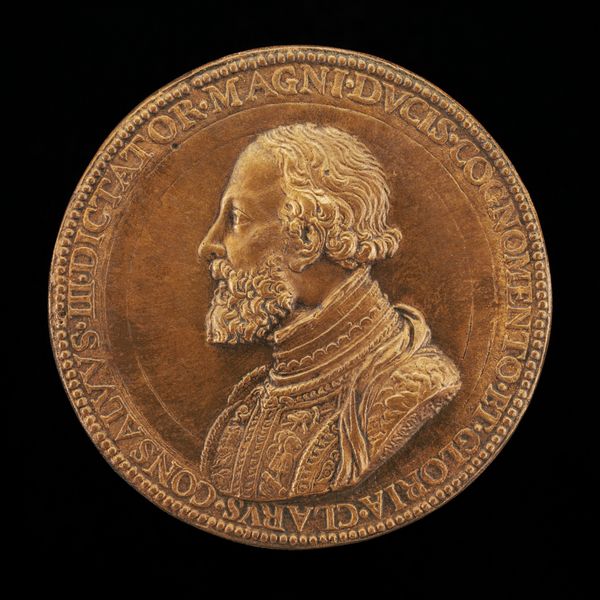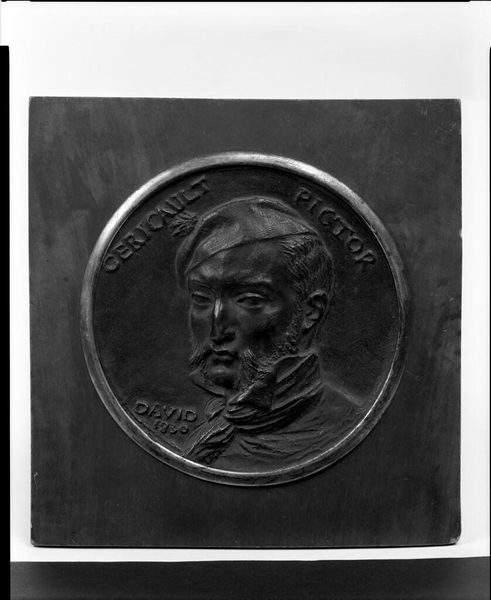
Léon Joseph Florentin Bonnat (1833–1922), member of the Institute in 1874 1890
0:00
0:00
Dimensions: Diameter: 2 1/4 in. (5.7 cm)
Copyright: Public Domain
Editor: This is a bronze relief, titled "Léon Joseph Florentin Bonnat (1833–1922), member of the Institute in 1874" by Jules-Clément Chaplain, made in 1890. It looks like a commemorative medallion. What statements about power and identity do you think it makes? Curator: Well, consider the context. This piece commemorates Bonnat, a member of the Institute. The "Institute" signifies a concentration of intellectual and artistic authority in late 19th-century France. So, it’s not merely a portrait; it's a statement about belonging to an exclusive circle and the power dynamics within artistic institutions. It also immortalizes Bonnat within that system. Does it strike you as a critical or celebratory portrayal? Editor: It feels pretty celebratory. I mean, look at the neoclassical style—very dignified and الرسمي. Was it common to produce these for artists? Curator: Absolutely. But it's essential to consider who got commemorated and why. What values were being upheld by these official portrayals? Was it technical skill, allegiance to a certain style, social connections? Who was being excluded and why? Think about gender and race – how often are women and people of color given this kind of "immortality" in art? Editor: That's a great point. It's not just about celebrating Bonnat as an artist, but reinforcing a specific, very exclusive, artistic and social order. I see the medal now as less of a celebration of artistic talent and more a celebration of the art establishment. Curator: Precisely. These types of pieces offer insight into the socio-political structures of the art world and their lasting impact on whose stories get told and whose are ignored. Recognizing these visual power dynamics challenges the singular, often exclusionary, art historical canon. Editor: Thank you! It is very clear how even something that initially seems just a “portrait” can actually embody deeper and more complicated aspects of society.
Comments
No comments
Be the first to comment and join the conversation on the ultimate creative platform.
